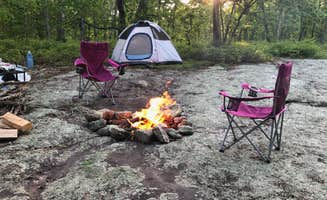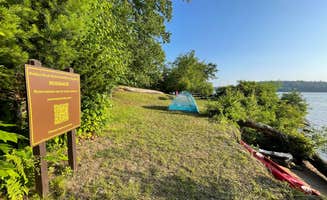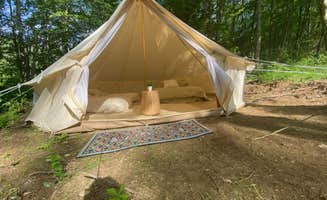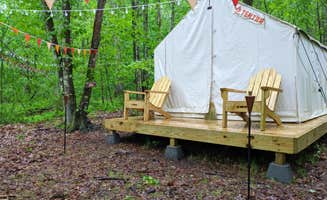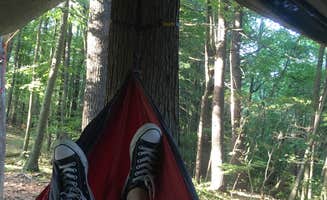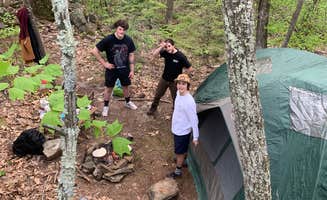Tent camping near South Lyme, Connecticut features sites on islands and along rivers, with most locations requiring boat or foot access. The region has a humid continental climate with hot summers reaching 80-90°F and cold winters. During summer, high humidity levels require extra consideration for tent ventilation and moisture management.
What to do
Hiking river trails: Chapman Pond Preserve offers trails with views overlooking the Connecticut River. The preserve requires a short hike to reach the camping area, rewarding visitors with natural surroundings. A camper noted, "Good tent platforms, picnic tables and outhouse. CT river within view. Good site."
Water activities: Gillette Castle State Park Campground provides access to the Connecticut River for swimming and fishing. "You can swim and fish and relax all day!" reports one visitor who camped at the south end of nearby Hurd Park.
Wildlife observation: Morning fog creates prime conditions for wildlife viewing at riverside campsites. Campers should bring binoculars for spotting birds and river wildlife. Waterfront locations allow direct observation without leaving camp.
What campers like
Riverfront solitude: The river camping experience offers isolation not available to vehicle campers. Sites are spaced far enough apart to provide privacy while maintaining access to water recreation.
Sunrise and sunset views: River Highlands State Park River Campground provides excellent viewpoints for sky watching. "The campsite was absolutely beautiful—especially with its location right by the river," reports a visitor who spent the day at the site.
Primitive amenities: Many sites strike a balance between basic comforts and wilderness camping. While limited in facilities, campgrounds like Onion Mountain Park offer established fire rings. "It is a very casual site and good for your first trip, you are close to your car and the road in case you need it," explains a regular visitor who has camped there with a Boy Scout troop.
What you should know
Transportation logistics: Plan for boat loading and securing gear in waterproof bags when accessing island sites. Strong paddling skills are required for river crossings with gear.
Limited facilities: Most sites lack running water, requiring campers to pack all supplies including drinking water. Outhouses are available at some locations but may be primitive.
Wildlife precautions: Take proper food storage measures even at developed sites. A camper at Hidden Lake Farm mentioned the "Quiet and Private" setting, which also means preparation for local wildlife encounters is necessary.
Weather considerations: Morning fog can delay departure from island campsites. One visitor to Onion Mountain Park advised, "There are a lot of bugs so be prepared, and we did put a bear bag about 100 feet away."
Tips for camping with families
Site selection for children: Choose locations with gradual water access for families with young children. Areas with shallow beach zones provide safer play areas during low tide.
Logistics planning: Access challenges require careful packing strategies when bringing children. Limit gear to essentials and distribute weight appropriately among adults.
First-time camping options: Onion Mountain Park serves as an excellent introduction to camping for children. "My BSA troop has been going here for years to help new scouts learn to camp," shares one regular visitor, highlighting its beginner-friendly attributes.
Safety considerations: Bring extra lighting for nighttime visibility at riverside sites. Allow additional travel time when navigating to boat-in sites with children, accounting for slower paddling speeds.
Tips from RVers
Alternative accommodations: The tent-focused camping near South Lyme provides few options for RV camping. RV owners seeking similar experiences should consider staying at nearby developed campgrounds and taking day trips to riverside recreation areas.
Day use options: RV owners can visit water recreation areas during daylight hours without overnight stays. Park at boat launch facilities like Deep River Landing and use watercraft to explore the river system and islands.


